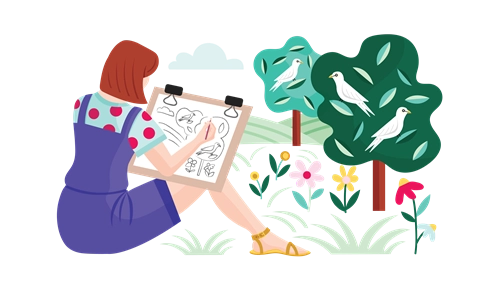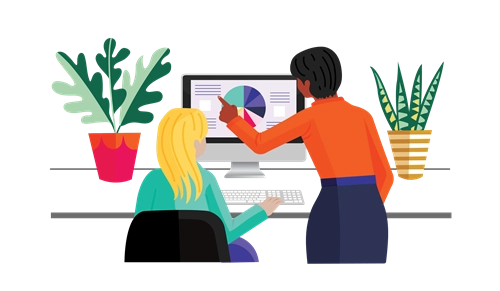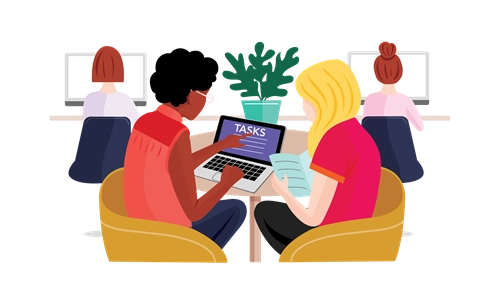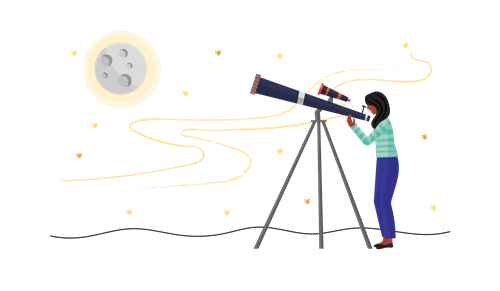-
Curriculum alignment
Science
AC9S8H02 – investigate how cultural perspectives and world views influence the development of scientific knowledge.
- S
- T
- E
- M
Bias in science
Years 7 and 8
Learning hook
- Ask students to work in pairs and write down as many scientists as they can in 60 seconds.
- Ask them to go through their list and highlight all the women.
- With another colour, ask them to highlight the scientists from non-Western backgrounds.
- Collect the class data from the lists anonymously, either by using an app or having students put their heads on the desk and hold up paper numbers or fingers.
- Together, examine the data. What trends do students see? What questions does this provoke for them?
Girls in focus
Some students may feel they have ‘underperformed’ if they are unable to identify scientists from a variety of gender or cultural backgrounds. It’s a good idea for students to work in pairs for this activity, and very important to ensure students appreciate that their perceptions are often the result of broader social forces.
Learning input
Explain to students that cultural perspectives and worldviews which preference particular genders or over others impact the way scientific knowledge is developed, as they can privilege the contributions of some scientists over others.
As a class, watch this Ted Talk by Kylie Walker to learn more about the visibility of women scientists and hear about the Superstars of STEM program.
The old man in a lab coat - Smashing stereotypes in science | Kylie Walker | TEDxMelbourne
Explain that an extreme example of bias against women in science is ‘the Matilda Effect’, where the bias against acknowledging achievements of women scientists means their work is attributed to their male colleagues. The phrase was coined in 1993 by Margaret Rossiter, an academic historian, and named after the women’s rights advocate Matilda Joslyn Gage.
Learn more about Margaret Rossiter’s work and the forgotten women of science by accessing the articles linked in the resources section.
Learning construction
Part A – the impact of bias
- Explain to students that gender bias can occur against people who identify as any type of gender, and that this is just one type of bias which can prevent people from fully participating in science.
- Ask students to think of any times when they have felt ‘locked out’ of something related to STEM they wanted to pursue. What caused this? Was it a stated rule or requirement, an issue related to geography or access or perhaps a feeling or belief?
- Students can write a personal reflection explaining their experience and the impact of bias in their own lives.
Girls in focus
Many girls have experienced gender bias in their experiences of school STEM. Consider the resources they’ve been experiencing at school and how many of them portray women as active leaders in STEM fields. Acknowledging the explicit and implicit bias against women in STEM in many girls’ environments is a great way to start a conversation about actively challenging stereotypes.
Part B – what shapes who gets to do science?
- Have students work in small groups to create a concept map showing all the factors that can impact on who gets to do science.
- Discuss the various factors and explore whether they would impact different people differently.
- Ask students to consider how this map might have looked if it were developed 100 years ago. What do they think has changed since then?
Part C – celebrating diversity in STEM
One way to continue to improve equity in STEM fields is to celebrate and share diverse STEM practitioners.
Ask students to create a poster that celebrates the contributions of a little-known scientist. It could be someone the students know personally, someone who has inspired them or someone who is of a gender, cultural, racial or social background of the student’s choice.
Their poster should include the scientist’s name, area of focus and explain their contributions to STEM. It should engage high school students and encourage them to learn more about diverse practitioners.
For inspiration, students can explore the following poster resources:
In addition to the poster, students should explain why they chose this STEM practitioner and what they believe are some of the challenges this person may have faced in their career.
Girls in focus
Research has shown that projects which involve researching and presenting historic and contemporary women in STEM can be intrinsically motivating and informative. Engaging in personally meaningful projects supports students’ engagement with STEM.
-
Rubric
Assessment
Criteria
Beginning
Achieved
Exceeded
Poster content
Selects visuals and words that show the person engaged in a STEM career.
Selects visuals and words that refer to the person’s STEM career.
Selects visuals and words that reflect key aspects of the person’s STEM career.
Poster design
Text is legible and graphics are clear.
Text and graphics are clearly presented, and the design is visually appealing.
Text and graphics are clearly visible from a distance and the design is interesting and eye catching.
Empathy and insight
Connects to aspects of the person’s identity.
Shows evidence of empathising with aspects of the person’s identity and considering the worldviews they may have experienced.
Shows evidence of inferring from research about the person’s identity and background as well as the worldviews they may have experienced.
Communication
Shows awareness of some aspects of using the medium for communication. Provides an explanation of their choice of STEM practitioner.
Uses the medium effectively to meet the poster purpose. Explains their choice of STEM practitioner clearly.
Uses the medium effectively to meet the poster purpose and engage the audience. Explains their choice of STEM practitioner fluently.










